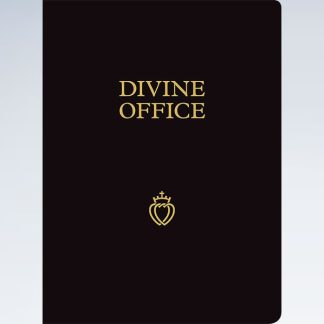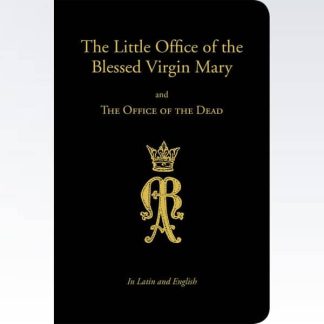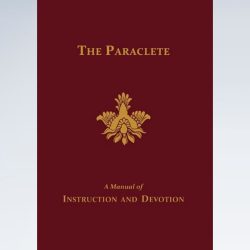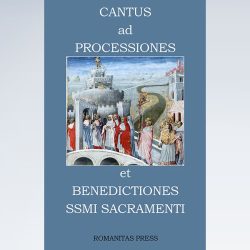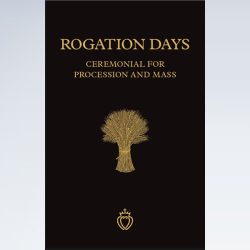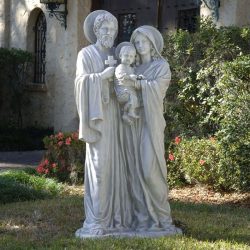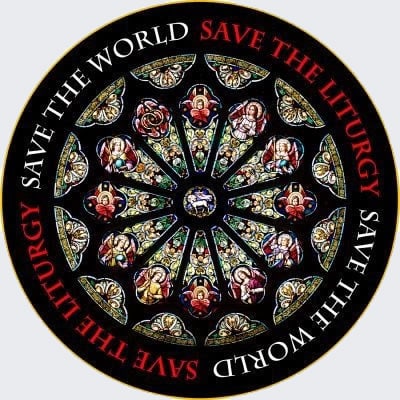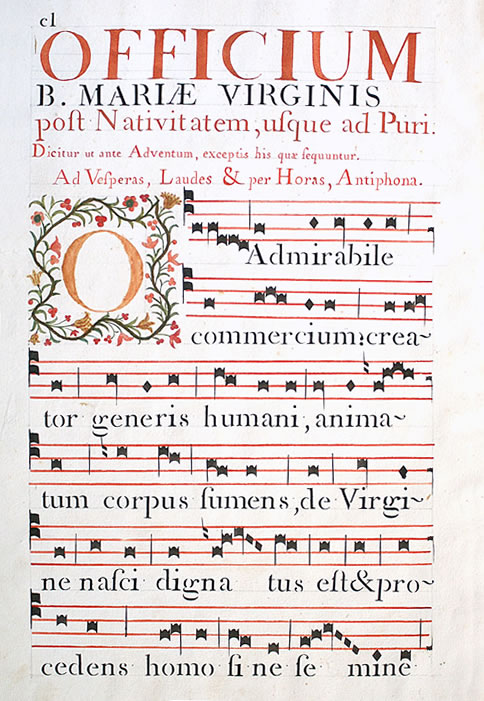

“They all attend Mass every day and say many Paternosters (rosaries) in public, … and whoever is at all able to read carries with him the Office of Our Lady; and they recite it in church with some companion in a low voice, verse by verse, after the manner of churchmen.” ~ From the Report of the Venetian Ambassador upon visiting England in 1496.
The Little Office is one of the official prayers of the Church and the most venerable of all devotions in honour of Mary. This is why so many religious societies have adopted it as their meed of praise to the Queen of Heaven, and as a link uniting them with the great voice of Catholic liturgy rising up day and night before God. The Sovereign Pontiffs have encouraged the recitation of the Little Office by granting it many indulgences, followed throughout in the authorized edition of the Raccolta.
“Among its many practices of piety, the eager devotion of the Christian faithful toward the holy Mother of God has treasured for centuries an exercise by which the Virgin Mother of God is especially honored, and which is called the Little Office of the Blessed Virgin Mary. This devotion has gained a greater following in recent times since the daily recitation of this Office is prescribed by the constitutions of many Congregations, both of Lay Brothers and of Sisters—a regulation meriting the highest praise.” Pope Pius XII
Would you like to learn what each of the hours symbolize, where to find your place in the book, what time to pray, and how to enter more deeply into the Word of God in the Psalms? There are several resources available to begin with. Virgo Sacrata offers two versions of The Little Office of The Blessed Virgin Mary, both in English and Latin.
In “The Little Office of the Blessed Virgin Mary”, the traditional Latin names are used for the hours:
As the Psalmist sings, “Seven times a day I praise you, O Lord !”
- Matins: (from the Latin, matutinas vigilias, or “morning watches”) The hour of Matins was a nocturnal hour, it was celebrated at midnight onwards and often joined with Lauds as a continuing vigil of prayer. Within this is a great consolation, the realization that even now, in many parts of the world, midnight is the advent of the expectant new day… and “we do not know the hour when the Lord will come!”
- Lauds: The word Lauds is derived from the Latin word laus meaning, praise. This is always an hour of praise, as is clear from the Psalms chosen within the text, which recall the Resurrection of Our Lord Jesus Christ from the dead, and the gift of new life that comes to us in this new God- given day.
- Prime: (Latin: prima, first) was originally the earliest Canonical Hour, prima hora, and the first hour of the Roman day. Prime is celebrated at 6 AM, an hour in which we consecrate the forthcoming day to God, giving thanks for the awakening to life and being open to God’s gift of Himself through his Word.
- Terce: (Latin: tertia hora) Called thus because the Romans celebrated it at what they regarded the third hour of their day, which was 9 AM in the morning. Terce is often called the golden hour, or the Hour of the Holy Ghost, recalling the hour when the disciples went up to the Temple to pray. It also commemorates the event at Pentecost when the Holy Spirit descended upon Mary and the Apostles at this hour. As did the Romans, we celebrate Terce at approximately 9 AM and it is, therefore, a prayer inspiring us to begin the day under the guidance of the Holy Spirit and in union with Mary Our Mother. “Come Holy Spirit!”
- Sext: This was the sixth hour of the Roman day, what is for us about Midday. At midday the time we recall the hour that Christ was raised upon the Cross of Salvation for us, and Mary His faithful Mother standing faithfully by Him in His suffering. This is midday, and this hour can be regarded as an oasis of prayer, a time to turn to Our Savior and pray in union with Mary for the suffering of the world.
- None: (Latin, nona hora) This hour was regarded by the Romans as the ninth hour, hence the Latin name nona, which for us occurs about three o’clock in the afternoon. It was at the ninth hour, we will remember, that Jesus cried out in his agony, ‘Eloi, Eloi, lamma sabacthani?’ which means, ‘My God, My God why hast thou forsaken me!” This is the hour of Crucifixion, the hour of Redemption, and in this hour we bring all our burdens to Christ on the Cross, praying for all poor sinners with and through Mary His Immaculate Mother.
- Vespers: (Latin, Vespers Espera ) was a name given to the evening star of Venus, which rising in the evening was a call to prayer, a light in the Heavens announcing the drawing on of the day, Vespers is prayed anytime after the Hour of None and before Compline.
- Compline: From the Latin word (Latin, complere, or to complete) so named because it is the last hour of the day to be prayed. Compline is a beautiful way to complete our day, to pray with Mary and to Mary for the dying and for all those upon whom the night either of the spirit or in fact will soon fall. We pray for Gods protection for the night, conscious of the many evils perpetrated in the nocturnal hours. It is an hour in which we commend everything , surrender everything to God. How many times on our Christian journey we pray, “Holy Mary, Mother of God pray for us sinners now and at the hour of our death…”
Each Canonical Hour Consists of:
- Introduction
- Hymn
- Antiphon
- Three Psalms
- Antiphon
- The “Little Chapter” reading and responses
- Final prayers and responses
- Final Blessing
- Intercession for the Dead

VIRGÓ SACRÁTA is a Christian mission-driven online resource and shop inspired from the beauty of Catholic faith, tradition, and arts. Our mission is to “Restore All Things to Christ!”, in continuing the legacy of Pope St. Pius X under the patronage of the Blessed Virgin Mary. “Who is she that cometh forth as the morning rising, fair as the moon, bright as the sun, terrible as an army set in battle array?” O Mary, conceived without sin, pray for us who have recourse to Thee.

